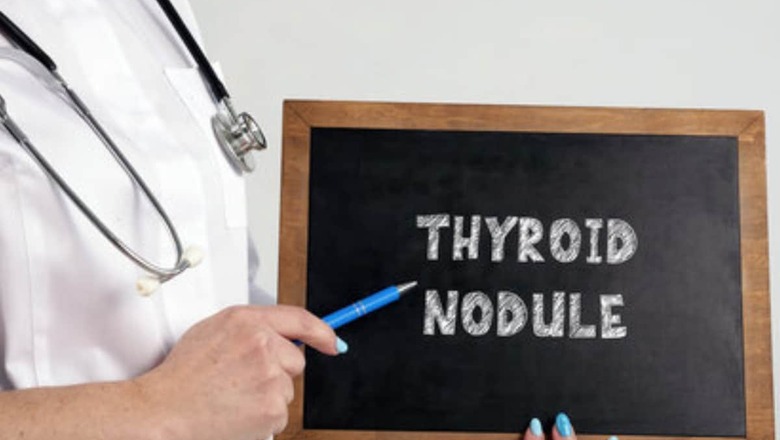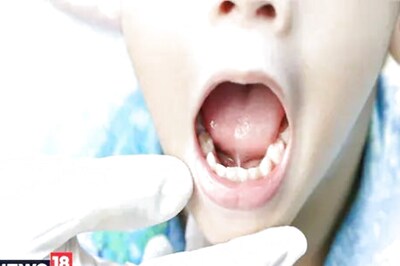
views
The Thyroid gland is a butterfly-shaped gland situated in the neck and it plays an important role in maintaining metabolism, heart rate and other body functions through hormone production. This gland produces two important hormones called, thyroxine or T-4 and triiodothyronine or T-3. Each of these hormones is responsible for maintaining the vitals of your body.
Thyroid nodules are small, fluid-filled solid nodules which is an abnormal growth in the thyroid gland. These nodules are harmless until and unless the individual faces discomfort. According to studies, thyroid nodules occur among adults who are 50 and above. Surprisingly, these nodules or growth is common among women. These nodules are too small to be noted and hence do not have any symptoms. These nodules can be detected through regular physical examinations or through techniques like needle biopsy, ultrasound, or CT scan.
Thyroid nodules are usually benign or non-cancerous. The nodules which are non-cancerous often exhibit certain specific characteristics such as cystic appearance, regular shape and smooth borders on a CT scan or ultrasound. The challenge lies in detecting cancerous nodules as they are similar to non-cancerous ones and cannot be detected during imaging techniques.
With technological interventions and techniques, thyroid nodules can be detected in terms of cancerous or benign.
Here are some techniques through which we can detect and differentiate the thyroid nodules-
- Ultrasound:The initial procedure to identify thyroid nodules is done through ultrasound. The nodule’s size, shape, and content can all be determined with the use of ultrasound techniques. Though ultrasound is a useful tool, it cannot accurately identify cancer.
- FNA Biopsy:An ultra-fine needle is used during a fine-needle aspiration (FNA) biopsy to remove cells from the nodule for microscopic analysis. Whether the cell sample is benign, suspicious, or malignant is determined by the pathologist’s analysis.
- Molecular Testing:At times, the FNA Biopsy can remain uncertain. For accurate diagnosis and to understand the genetic modification of these nodules, molecular testing is conducted. Post accurate diagnosis, the treatment can begin.
Depending on the diagnosis, thyroid nodules may require different treatments. It’s possible that benign nodules only need routine monitoring. However, if a nodule is malignant, immediate treatment is required, which may include thyroid hormone suppression, surgery, or radioactive iodine therapy. In order to monitor any changes in size or appearance, regular follow-up is essential for all patients with thyroid nodules.
Follow-up visits can help identify suspected cancers early on, leading to more successful treatment. Sometimes, post-removal of cancerous nodules, one needs to follow up and consider taking physical examinations for prevention of any other new growth.
In conclusion, even though most thyroid nodules are benign, they can be a cause for concern. The right management, however, depends on early discovery and precise diagnosis. If concerned, do not hesitate to speak with a healthcare provider if you experience any strange lumps or swelling in your neck or if you have thyroid nodule risk factors. By being proactive and knowledgeable, you can ensure optimal results and protect your thyroid health.
















Comments
0 comment